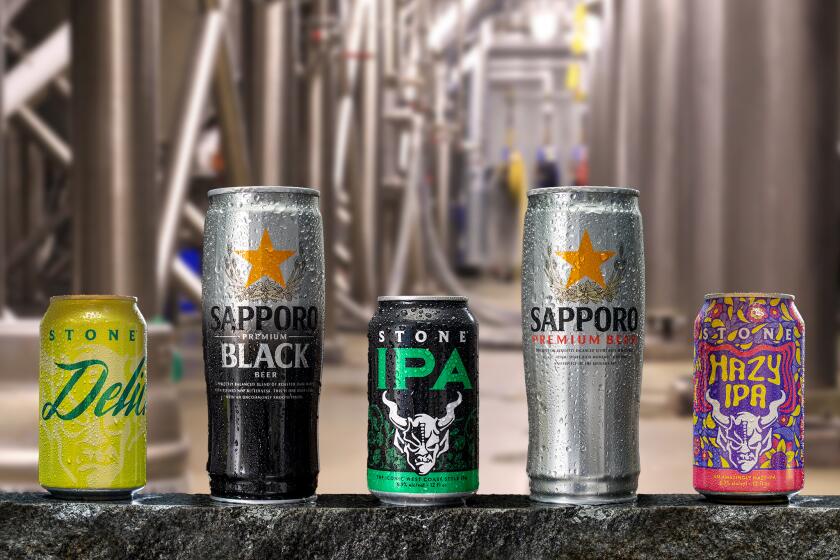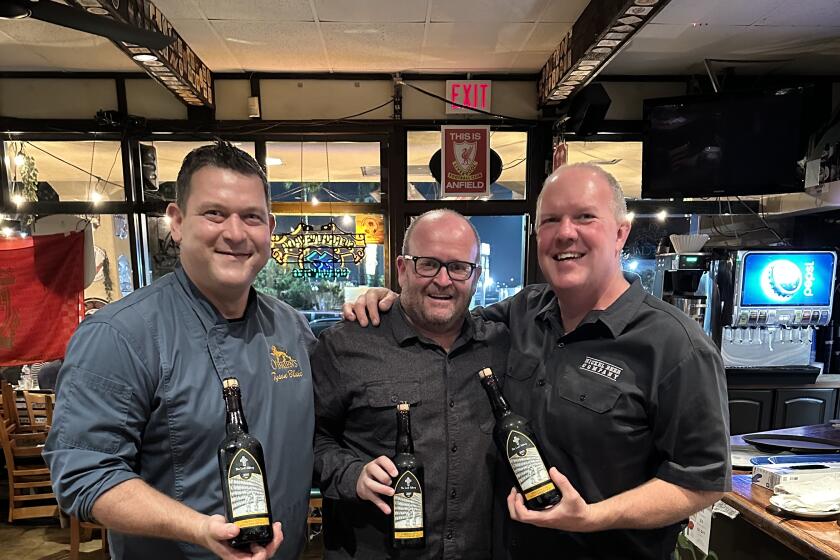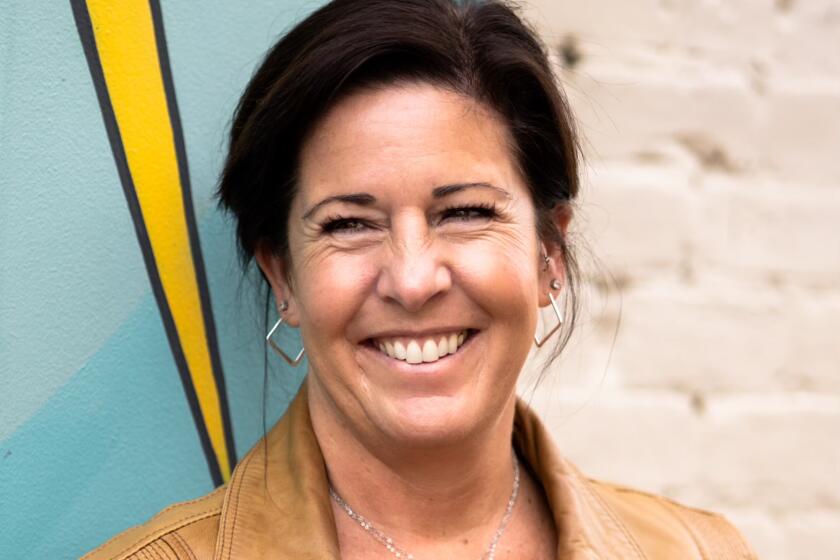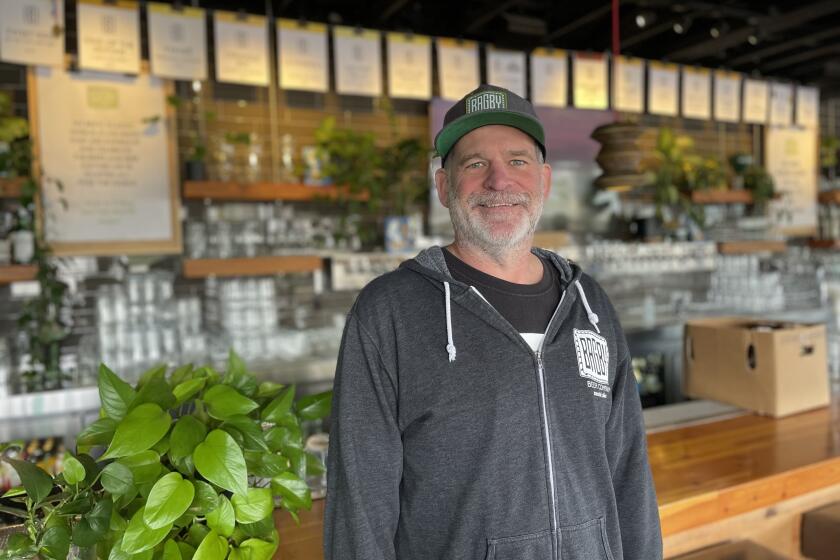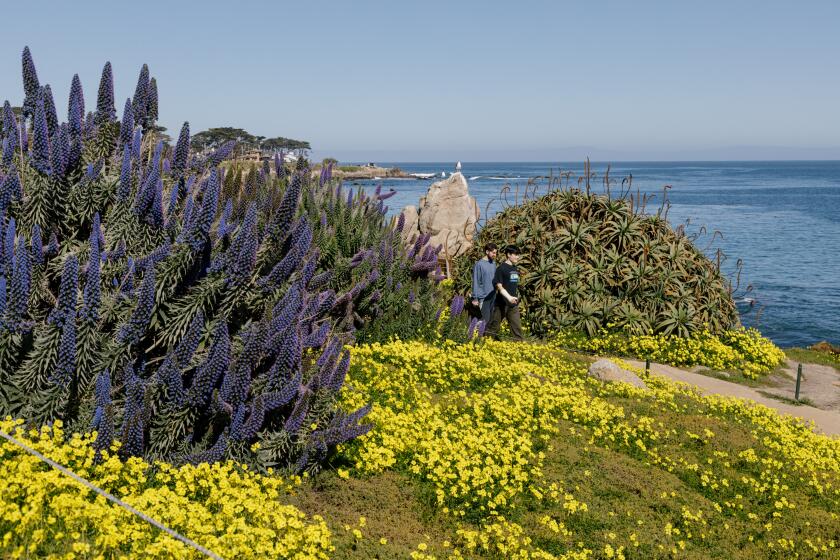Going this way? Death is still inevitable, but ‘angels’ and cafes want to change our last days
Anita Neff may not be the last person you’d want to meet, but she may be the person you’d want to meet last.
“I’m a death angel,” she said.
As an end-of-life doula, Neff sits with the dying and their families. She attends to matters material — is the will up-to-date? Do you have passwords for online accounts? — and spiritual. Some clients want to exit this world to the sound of Neff praying or reading poetry. Others prefer recorded music, from Gregorian chants to the Grateful Dead, or the soothing aroma of fresh wood shavings.
“Everybody has their own thing,” she said.
The shroud awaits us all, but it doesn’t have to be a one-size-fits-all garment. A broad-based, loosely-linked movement — call it the New Death — questions how, why and when we depart, as well what constitutes a good death. Inspired by a wide range of beliefs (and non-beliefs), these activists are united by a common desire to make dying less painful and more dignified.
Some of these ideas are controversial. Last week, for instance, a court overturned California’s two-year-old physician-assisted suicide law. Advocates insist the measure alleviated unnecesary suffering by the terminally ill. Critics feared it could be used to hasten the departures of the elderly, infirm and inconvenient.
Other innovations, such as the Death Cafes where patrons meet over refreshments to discuss The End, may sound New Age-y.
Still more trends are reminiscent of a simpler era. Pacific Beach Christian Church’s congregation includes several families who occupy multi-generational homes. While these clans moved in together to save money, they’ve enjoyed a side benefit: children have daily, affectionate contact with ailing elders.
“I’ve been so struck by how this little three-year-old is being exposed to death and dying in ways that are not scary,” said the Rev. Brian Daly, 54, the church’s senior pastor.
“It’s like coming full circle to what used to happen, when we didn’t have rest homes, when people didn’t die in hospitals. It’s beautiful to me.”
Peace and redemption
Hospice care, the practice of tending to the terminally ill, can be traced back to medieval Europe. As practiced in the United States today, it offers palliative care to patients who are considered to have no more than six months to live.
Not long ago, many regarded this as somehow sinister or taboo.
“Even in my time here,” said Daly, who has been with Pacific Beach Christian for 24 years, “hospice used to be one of those words that had a stigma attached to it. That has changed completely.”
Relieving pain is a key goal, but hospice workers draw the line at the ultimate form of pain cessation — helping patients end their own lives.
To San Diego’s Faye Gersh, that flies in the face of public sentiment. “According to surveys, the vast majority want the option of physician aid in dying,” said Gersh, who 31 years ago founded the San Diego chapter of the Hemlock Society. “The public wants a larger choice.”
Gersh campaigned for California’s “Humane and Dignified Death Act,” a 1992 ballot initiative that called for the leagalization of physician-assisted suicide. That failed, but in 2015 the California legislature approved a similar measure, the “End of Life Options Act.”
Last Tuesday, though, a Riverside County judge overturned the law, arguing it had been illegally passed during a special legislative session called to consider healthcare issues. California, state Attorney General Xavier Becerra said, will appeal.
At the local Hemlock Society’s monthly meeting, 1:30 p.m. today at the Scottish Rite Event Center, Dr. Robert Uslander will discuss the “End of Life Options Act.” He’ll lead a rally in support of the law outside the center at 2:30 p.m.
Uslander, whose Del Mar practice focuses on patients’ final months, has been with numerous patients as they self-administered medications to end their lives. The most recent: a Pacific Beach woman who used the law’s provisions one day before Superior Court Judge Daniel A. Ottolia struck it down.
“She just ended her life,” Uslander said, “peacefully.”
She had followed a long road, meeting all the law’s requirements. Patients had to be California residents, 18 or older, diagnosed with a terminal illness and mentally competent. They had to make face-to-face requests for lethal medication to a physician then, no sooner than 15 days later, from a second physician.
A written consent form had to be signed in front of two witnesses, before the prescription could be sent to a pharmacy, And not just any pharmacy — many had declined to fill these orders, which are for two separate medications. Taken together, they prove fatal.
“And it can’t be given to them,” Uslander said. “They have to take the medication on their own, willingly, voluntarily.”
In the law’s first six months, state records show that 173 California physicians wrote 191 prescription for the lethal medications.
The law’s restrictions seemed burdensome to Gersh, even insulting. “It’s a hard law to use,” she said. “It should be expanded to include people who are not terminal but who are suffering from a disease — people with ALS, multiple sclerosis, certainly dementia.”
Others, though, are happy to see the law overturned. By sanctioning suicide, Michael Lovette-Colyer argued, society helps to push elderly citizens towards their final exit.
“The aged in our culture have a hard time finding a place,” said Lovette-Colyer, assistant vice president at the University of San Diego. “There’s a feeling they are a burden or a financial drain rather than a valued part of society.”
While Lovette-Colyer acknowledged that it’s good to minimize pain, accelerating death’s natural process reduces chances for emotional healing, for valuable time with loved ones.
Pastor Daly agreed:“I think if given choice we would always avoid suffering. But I have seen often that spiritual things can happen in the midst of suffering that wouldn’t happen otherwise. We of faith believe that out of suffering can come redemption.”
Wisdom, he added, is another possible byproduct of a longer death. The notion that we can control every aspect of our lives — even our departures — is an illusion, he said.
“It’s kind of the last spiritual lesson that death and dying has for us,” he said, “to let go of that need to be in control.”
Between two worlds
Debates about assisted suicide still rage, but not inside the Death Cafes. These informal gatherings were created as safe spaces for people to share thoughts and emotions about this final passage, without any agenda or judgment.
The first Death Cafe was held in London in 2011. Today, Cafes have opened in 56 countries, from Afghanistan to Zimbabwe, and across San Diego County.
Last week, a Death Cafe convened in the Bay and Beach Family YMCA in Pacific Beach. The eight attendees included a plastic surgeon, a recent widow and Gloria Andrade, 71, an Old Town resident who had cared for her parents in their last days.
“I see there’s so much fear,” she said, “and no one wants to talk about it. This is comforting and it takes away the fear.”
Barbara Bailey, a palliative and hospice care nurse educator, hosted. Guests were offered bottled water, cookies, fruit and written conversational prompts: “What would you like on your tombstone?” “What are the most important things to prepare before your death?”
“This is an opportunity to share your thoughts and ideas with others in an accepting, confidential environment,” said Bailey, who has hosted Cafes for three years. “It’s an opportunity to think about things that we often don’t think about.”
Attendees cover the entire spectrum of spiritual faiths, from ardent believers to agnostics to atheists. There’s no agenda and the Cafes have attracted supporters and opponents of assisted suicide. Sharing is encouraged, arguing is forbidden.
“It’s a positive thing,” said Dr. Uslander, “helping to advance the conversation, making the conversation about death and dying more comfortable and acceptable.”
One of the attendees was Romel Hokanson. In 2003, she helped care for a cousin who was dying from breast cancer.
“I was blessed,” she said. “There was something about being able to sit and be with a person at that time.”
She volunteered with San Diego Hospice for several years, and recently became an end-of-life doula, assisting Anita Neff.
While every client is different, nearly everyone has material and emotional or spiritual affairs to set in order. Hokanson helps clients with the former, such as wills, but feels the latter issues are more essential for a peaceful death.
“I experience this as a very spiritual and sacred time,” she said. “I see a person dancing between two worlds — whatever that next world is or is not.”
That dance can be difficult, Uslander said, if people haven’t engaged in end-of-life planning. Especially important, he said, is an advanced health care directive, spelling out which procedures and extraordinary measures are acceptable and which are not.
“I think if we did a better job of that,” he said, “we’d have a lot fewer crises and traumas.”
And if death were more a part of family life, doulas maintain, we might have fewer fears and regrets. After a death, Neff sometimes helps clients bathe their loved ones’ body, whose private parts are discreetly draped.
“We keep them in our presence,” she said of the dearly departed. “We are helping people through the grieving process, helping them feel the natural process of death.”
But only if clients want this service.
“There’s no one way,” Neff said.
In fact, there is one ultimate destination. But there are many paths.
Get U-T Arts & Culture on Thursdays
A San Diego insider’s look at what talented artists are bringing to the stage, screen, galleries and more.
You may occasionally receive promotional content from the San Diego Union-Tribune.

